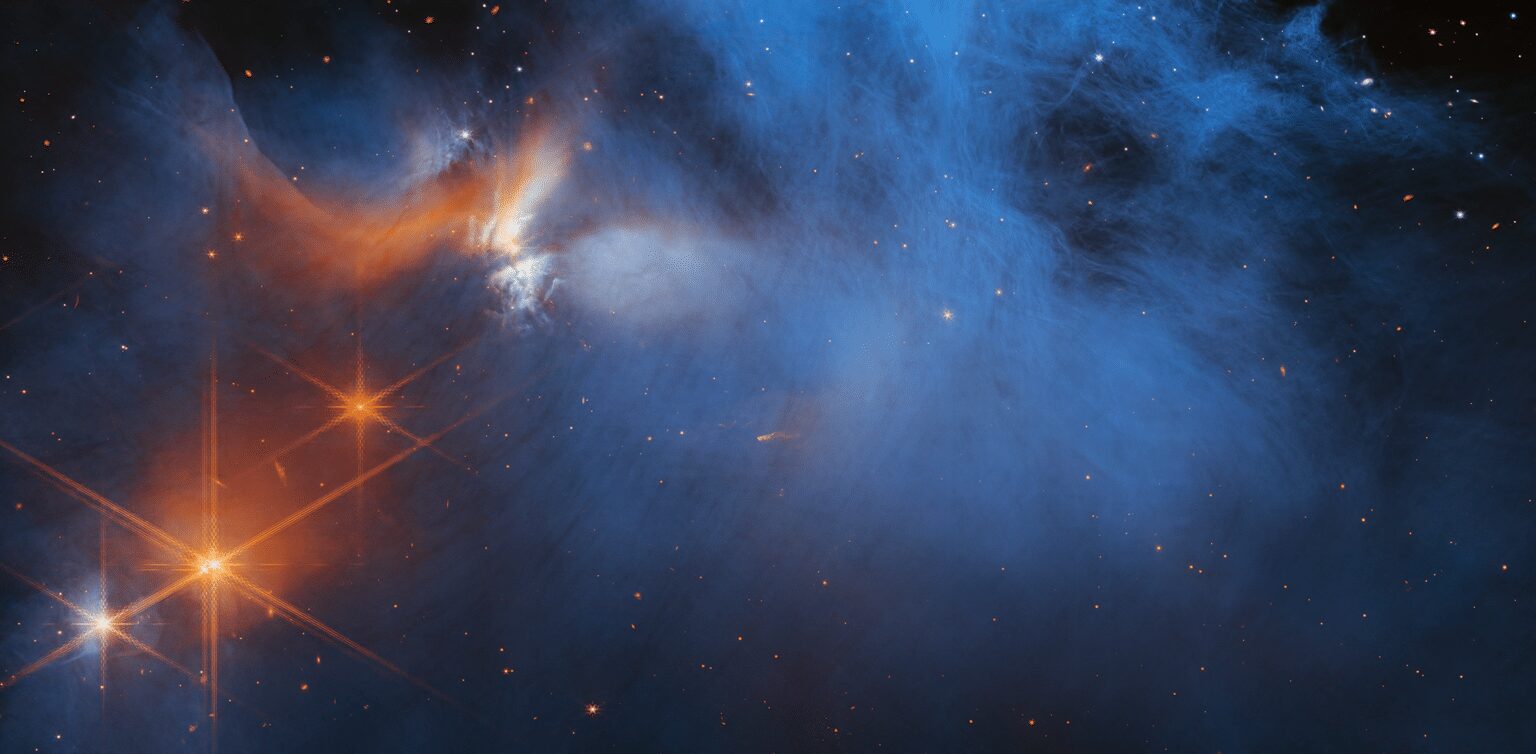At a distance of 630 light-years, the James Webb Space Telescope probed within a thin molecular cloud and discovered ice consisting of several elements.
Background
Ice is necessary to create a habitable planet because it is the primary supplier of several essential elements, including carbon, hydrogen, oxygen, nitrogen, and sulfur (referred to here as CHONS). Simple amino acids, sugars, and alcohols, as well as the composition of planetary atmospheres, are all significantly influenced by this compound.

An extensive inventory of the deepest, coldest ice ever observed in a molecular cloud has been compiled by an international team of astronomers using NASA’s James Webb Space Telescope.
The team recognized frozen versions of various compounds, including carbonyl sulfide, ammonia, and methane, as well as the most basic complex organic molecule, methanol, in addition to simple ices like water. (The researchers defined complex organic compounds as those with six or more atoms.) The ice components needed to create upcoming generations of stars and planets before they are heated during the development of new-born stars are being counted most thoroughly yet.
At a distance of 630 light-years, the James Webb Space Telescope probed within a thin molecular cloud and discovered ices consisting of several elements.
The formation of hydrogen and carbon monoxide molecules can occur in interstellar collections of gas and dust known as molecular clouds. These clouds’ dense groupings may collapse to create nascent stars known as protostars.
The Chamaeleon I dark molecular cloud, which is blue in the latest image, was the focal point of the Webb telescope. Ced 110 IRS 4, a young protostar, is seen to the left and is glowing orange. On Monday, research with the image was published in the journal Nature Astronomy.
More orange dots signify starlight shining through the cloud, scientists could identify the variety of frozen molecules and frozen molecules that were generating dozens of nascent stars in the Chamaeleon I dark molecular cloud thanks to the brightness.

The Webb telescope uses infrared light, which is not visible to the human eye, to observe the cosmos. Infrared light may penetrate dense groupings of gas and dust that would otherwise block the view and unveil previously undiscovered features of the cosmos.
The discoveries “provide a new window on the formation pathways for the simple and complex molecules that are needed to produce the building blocks of life,” according to the study’s lead author Melissa McClure, an assistant professor at Leiden Observatory in the Netherlands.
“Our findings provide light on the early, shadowy chemical phase of the growth of ice on interstellar dust grains that will eventually become centimeter-sized pebbles from which planets form in discs.” declared McClure.
Foundation of life in a cloud

The researchers discovered indications of more complicated compounds in addition to simple molecules.
Astronomer and Leiden Observatory postdoctoral fellow Will Rocha, who is also a co-author of the study, says that the discovery of complex organic molecules like methanol and possibly ethanol “also suggests that the innumerable star and planetary systems constructing in this specific cloud will possess molecules in a relatively sophisticated chemical state.”
This would suggest that the existence of primordial chemical precursors in celestial objects is a typical result of stellar evolution rather than a unique feature of our planetary system.
Klaus Pontoppidan, Webb project scientist at the Space Telescope Science Institute, who was engaged in this research, stated in a statement, “We simply couldn’t have observed these ices without Webb.” Much of the light from the background star is obscured in areas this cold and dense, thus Webb’s extraordinary sensitivity was required to detect the starlight and, consequently, identify the ice in the molecular cloud.
As planet-forming discs form nearby, astronomers will keep observing Chamaeleon I’s ices and prebiotic components. The blend of ices that can eventually be transported to the surfaces of terrestrial exoplanets or assimilated into the atmospheres of giant gas or ice worlds will be revealed by this, according to McClure.













